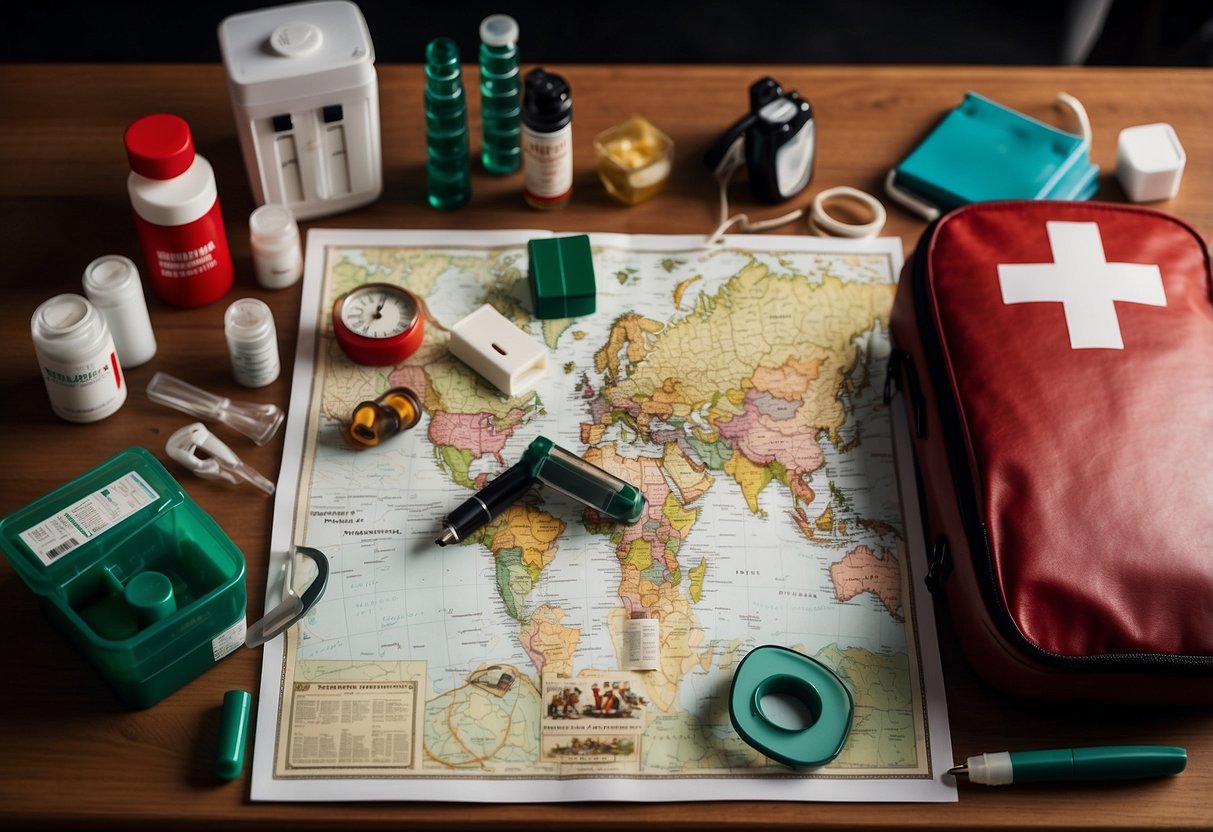Planning a DIY Road Trip: Essential Tips and Checklists for a Successful Journey
Safety and Security Measures

While embarking on a DIY road trip can be an exciting endeavor, ensuring safety and security remains paramount. Key considerations include managing essential documentation and prioritizing health and safety protocols for a worry-free journey.
Documentation and Identification
Proper documentation and identification are crucial before hitting the road. Ensure the vehicle’s registration is up-to-date and that all car insurance documents are within easy reach.
Carry a valid driver’s license and make sure it is not expired. In cases where international travel is involved, a passport and any necessary visas should be organized ahead of time. Consider obtaining roadside assistance coverage which can be a lifesaver in case of vehicle breakdowns or emergencies.
Having photocopies of important documents can serve as a backup. These documents should be stored in a secure but accessible location within the vehicle. Digital copies saved on a phone or cloud storage offer an additional layer of security.
Health and Safety
Health and safety preparations ensure that the journey remains enjoyable. A well-stocked first-aid kit is essential, containing bandages, antiseptics, pain relievers, and basic medications. Include any personal prescription medications you may need for the duration of the trip.
Before setting off, it’s wise to check the vehicle’s safety features. Verify the proper functioning of seat belts, airbags, and lights. Ensuring the tires are in good condition and properly inflated is also critical for safe travels.
Regular breaks help prevent driver fatigue. Stop at safe locations to stretch, hydrate, and rest. Keep a list of emergency contacts and local emergency numbers handy. Familiarizing oneself with basic car repair skills such as changing a tire or jump-starting a battery can also be highly beneficial.
Budgeting for Your Road Trip
Planning a DIY road trip involves careful budgeting to ensure you stay within your financial limits while maximizing your travel experience. Take into account all possible costs and manage your expenses effectively throughout your journey.
Calculating Costs
Before hitting the road, estimating each expense is crucial. Start with fuel, which will vary based on distance and vehicle efficiency. Use online tools or apps to estimate the total fuel cost for your trip.
Accommodation is another primary expense. Research and compare prices for hotels, motels, or campgrounds along your route. Consider the convenience and amenities each option offers.
Food expenses can add up quickly. Plan to mix dining out with preparing meals yourself. Stock up on non-perishable snacks and drinks to reduce the frequency of eating out. Don’t forget to budget for entrance fees to parks, attractions, and activities you plan to enjoy.
Additionally, allocate funds for unexpected expenses like vehicle maintenance or minor repairs. It’s wise to have a contingency fund set aside for emergencies.
Managing Expenses on the Go
Once your trip begins, keeping track of your spending helps you stay within your budget. Use a dedicated travel budget app or maintain a simple notebook to log daily expenses. Regularly review your budget to ensure you’re on track.
Opt for cash in scenarios where card payments may not be accepted. This includes small roadside stands, local markets, or remote attractions. Splitting your money and keeping some in separate locations is a safety measure.
Take advantage of discounts and free activities. Many attractions offer reduced rates for online bookings or group deals. Local events can provide entertainment without breaking the bank.
Lastly, monitor your fuel consumption and choose routes that optimize efficiency. Use navigation apps to avoid traffic and plan your stops. By actively managing your expenses, you can enjoy a memorable and financially sound road trip.



